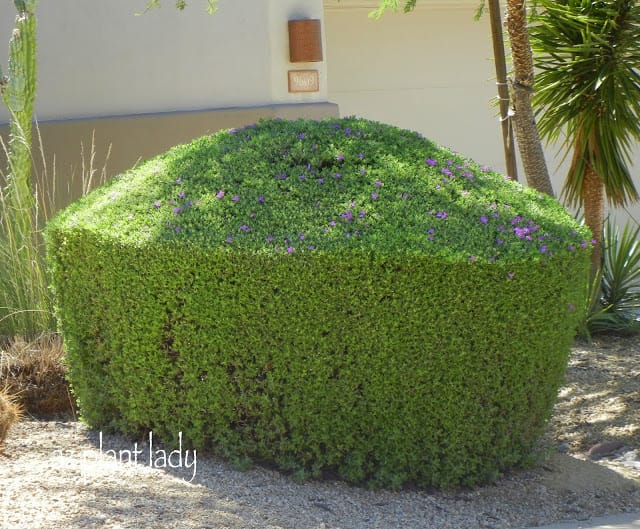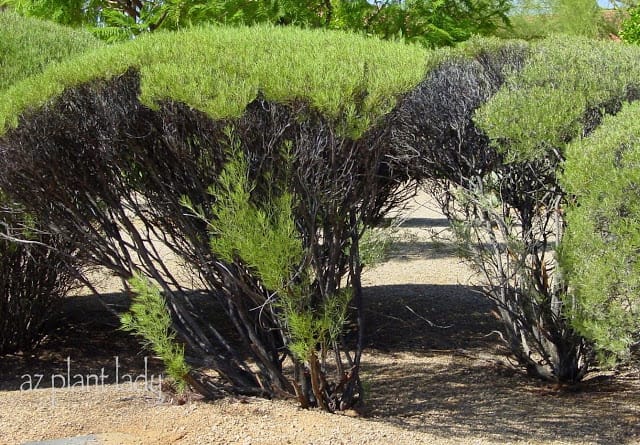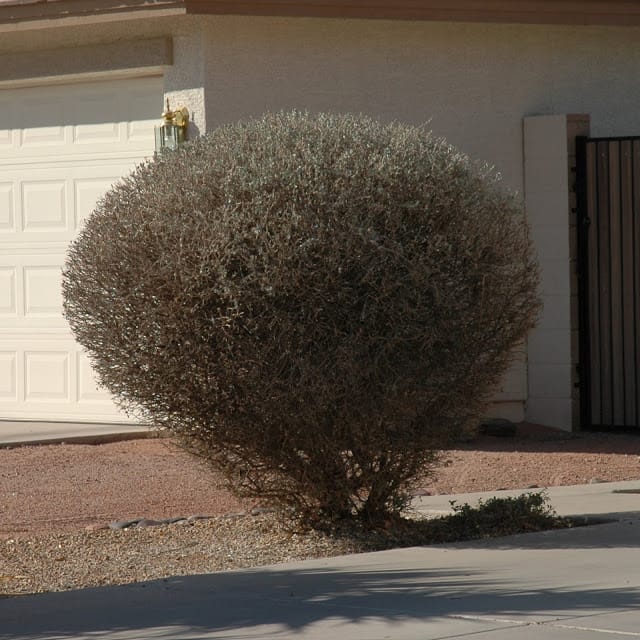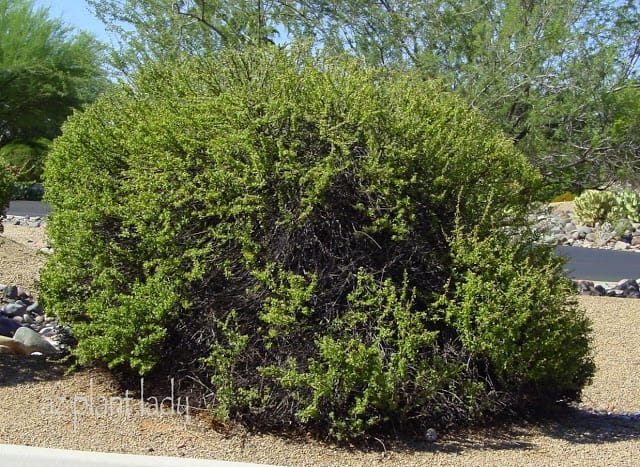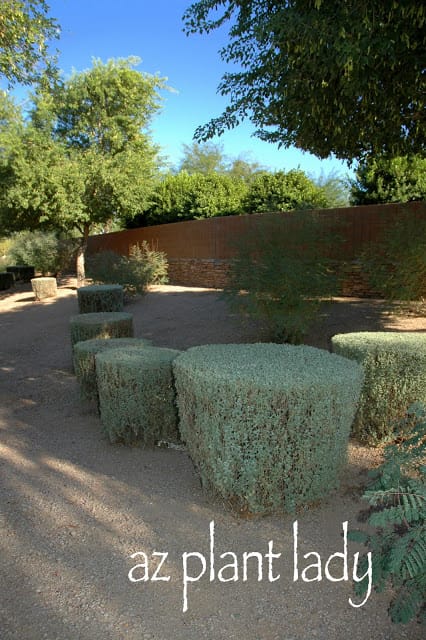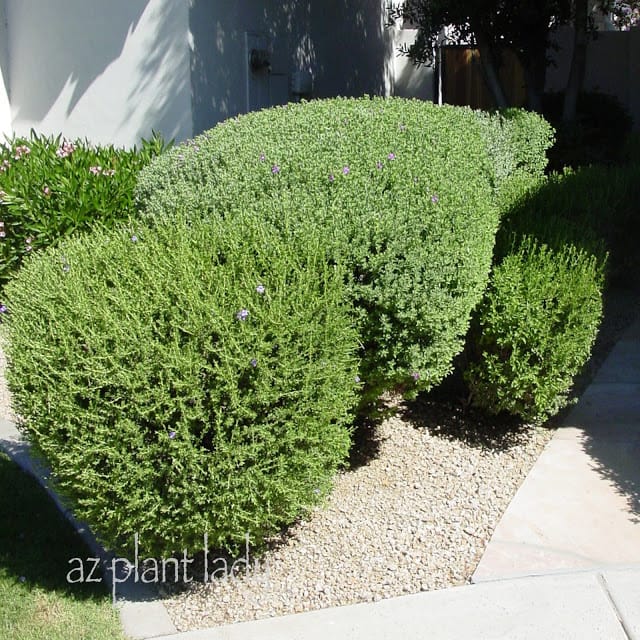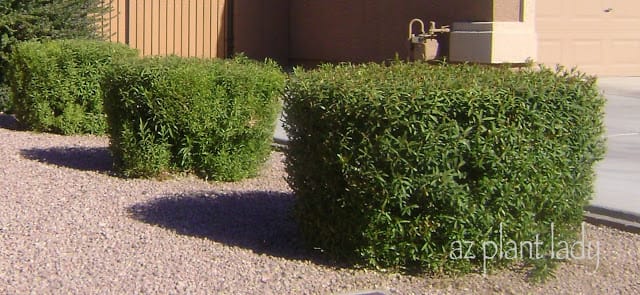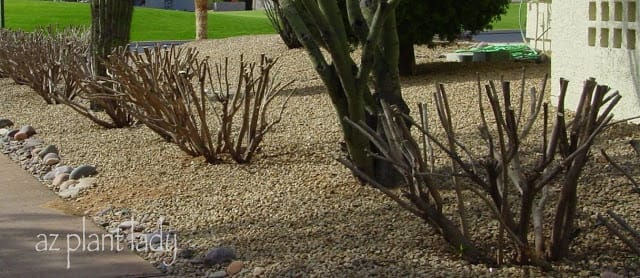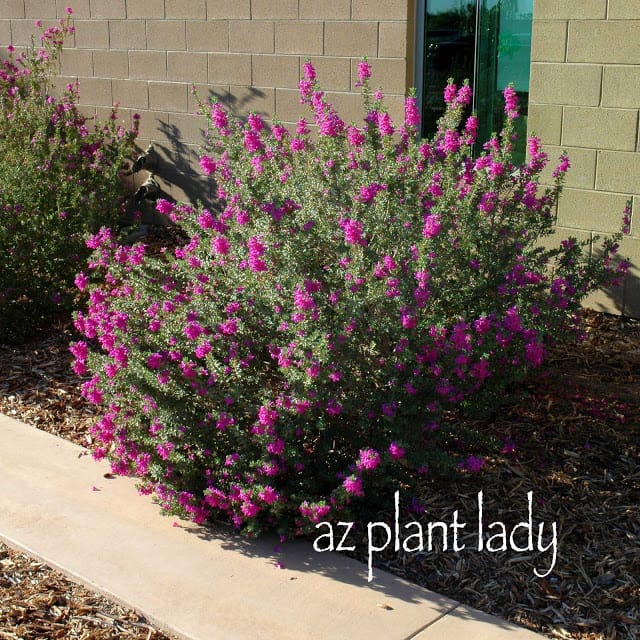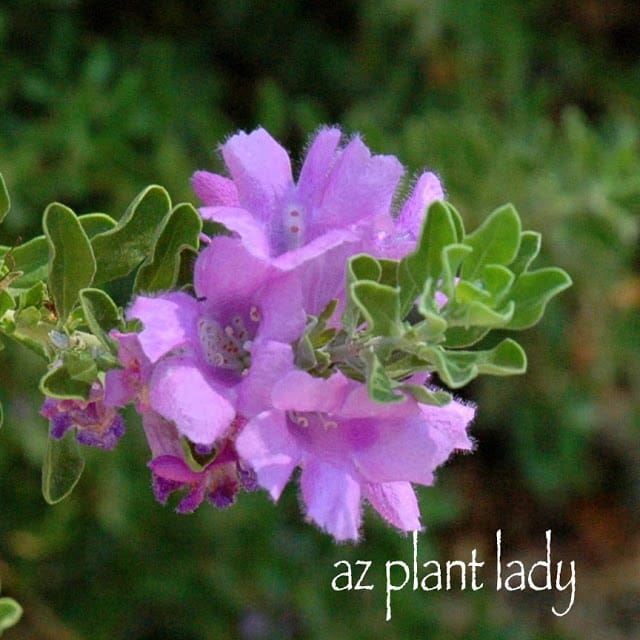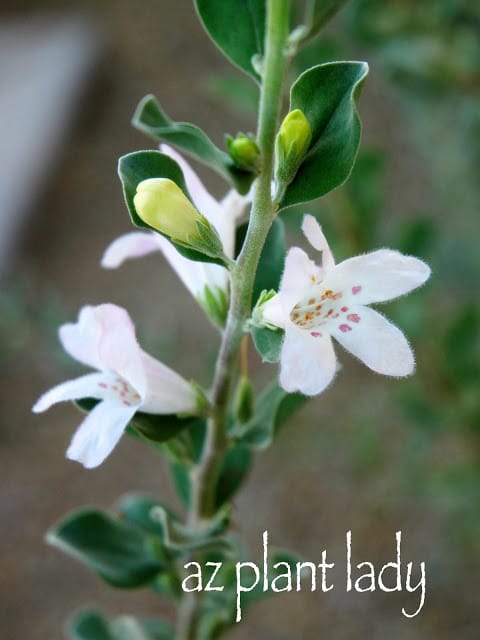Well, here is the post that I have been promising you all winter long. Are you ready to begin spring pruning? Okay, let’s get started…..
Those of you who have read my blog for any length of time have come to learn that I absolutely abhor formal pruning of flowering shrubs. I have posted about it twice and you can read more – Shrubs Aren’t Meant To Be Cupcakes and Read The Label Or You Might End Up With Cupcakes if you like.
First, we will start with the Bad (and ugly) – I am warning you, the following photos are not pretty. They show the results of formal pruning over time.
Feathery Cassia (Senna artemisiodes) Dead areas are a result of repeated shearing of the shrubs.
Texas Sage, sheared repeatedly, resulting in more dead then live wood.
Texas Sage ‘Green Cloud’ (Leucophyllum frutescens ‘Green Cloud’) Over the years, this flowering shrub had been sheared resulting in dead growth.
The following photos are not necessarily ugly but are examples of formal pruning that leads to the problems pictured above over time as well as higher maintenance.
White Texas Sage shrubs, pruned as cupcakes.
Chihuahuan Sage (Leucophyllum laevigatum) formally pruned and rapidly outgrowing its space.
Dwarf Oleanders (Nerium oleander)
As I have mentioned before, I am not against formal pruning when it is done to plants that specially suited to it such as Dwarf Myrtle, Boxwood, and others. However, formal pruning of flowering shrubs shouldn’t be done for many reasons, including:
– It removes the flower buds, severely curtailing the number of flowers that bloom.
– Causes the shrub to constantly work to replace the leaves that were removed, which causes stress to the shrub and ultimately shortens it’s life.
– Increases the maintenance required because of frequent pruning, which means more material is hauled off to the landfill as well as a higher landscape bill.
– Over time, repeated shearing causes branches to die off due to lack of sunlight reaching the interior of the shrub.
– The shrubs requires more water because it is constantly having to regrow what was removed.
– And lastly, creates a generic looking ‘blob’ in the landscape where a beautifully shaped and flowering shrub should be.
Okay, now some of you may have shrubs that look like some of these. But, don’t worry…there is hope and the solution is really quite simple. What they need is to be severely pruned back. This type of pruning is called “Severe Renewal Pruning.”
Now, I do need to warn you…many of us are familiar with the concept that beauty comes at a price. Well, there is a price to be paid in order for shrubs to look their best and show off their stuff and it requires an Ugly stage.
WARNING…the following photos are not pretty.
Severely pruned Texas Sage in spring
Severely pruned Dwarf Oleander
Okay, I warned you….but this is what you want your shrubs to look like after you are done pruning. I realize that all that is left are bare branches sticking up from the ground…BUT THIS IS GOOD!
Severe pruning like this removes old wood, which become unproductive over the years and does not produce as many leaves or flowers. It also stimulates new growth in the form of new branches that will produce more leaves and flowers. It also keeps the size of the shrub in check by reducing the size periodically and decreasing the amount of pruning needed later on.
Now, this type of pruning does not need to be done each year…I actually recommend doing this every 3 years or so.
Texas Sage 4 weeks after pruning
I won’t lie and say that the ugly stage disappears right away, but in 4 – 8 weeks, you will rewarded with new growth that will rapidly cover the bare branches.
**There is a chance that your shrubs will not recover from severe pruning. However, that is usually an indicator that they would not have survived for long if you had done nothing. So, you really have nothing to lose and everything to gain by pruning your plants this way every few years – you may easily add years on to the life of your shrub and dramatically increase their health and beauty.
Okay, I have covered the bad and ugly. Now for the good and beautiful…
Texas Sage ‘Green Cloud’ (Leucophyllum frutescens ‘Green Cloud’)
Desert Senna (Senna artemisiodes sturtii)
‘Rio Bravo’ Sage flower
‘White Cloud’ Texas Sage Flower
These beautiful photos should be reason enough to stop formally pruning your flowering shrubs. So, put down your hedge pruners. All you will need in the future are hand-pruners and loppers.
You may be wondering when should I prune my flowering shrubs? Well, Texas Sage and all Leucophyllum species can be severely pruned back in March as well as Oleanders. I do not recommend pruning them back severely in the summer months as they may not be able to grow back while dealing with the stress of the heat. Alternatively, do not prune in the fall or winter as you will have naked branches for a long, long time and new growth that does appear will be very susceptible to frost.
Cassia species should be pruned back once they have finished flowering, which is usually in late spring.
When it comes to pruning, a good rule of thumb is to prune less frequently, but when you do, prune back more severely.
